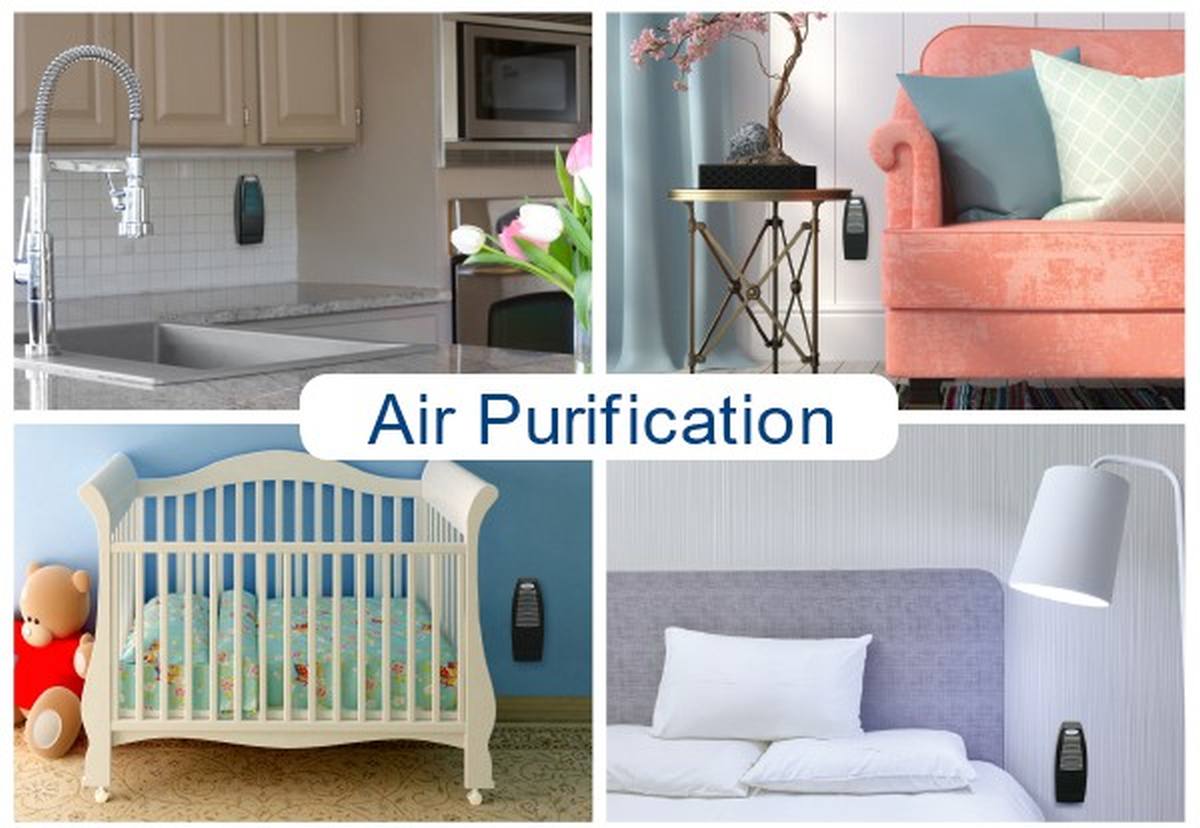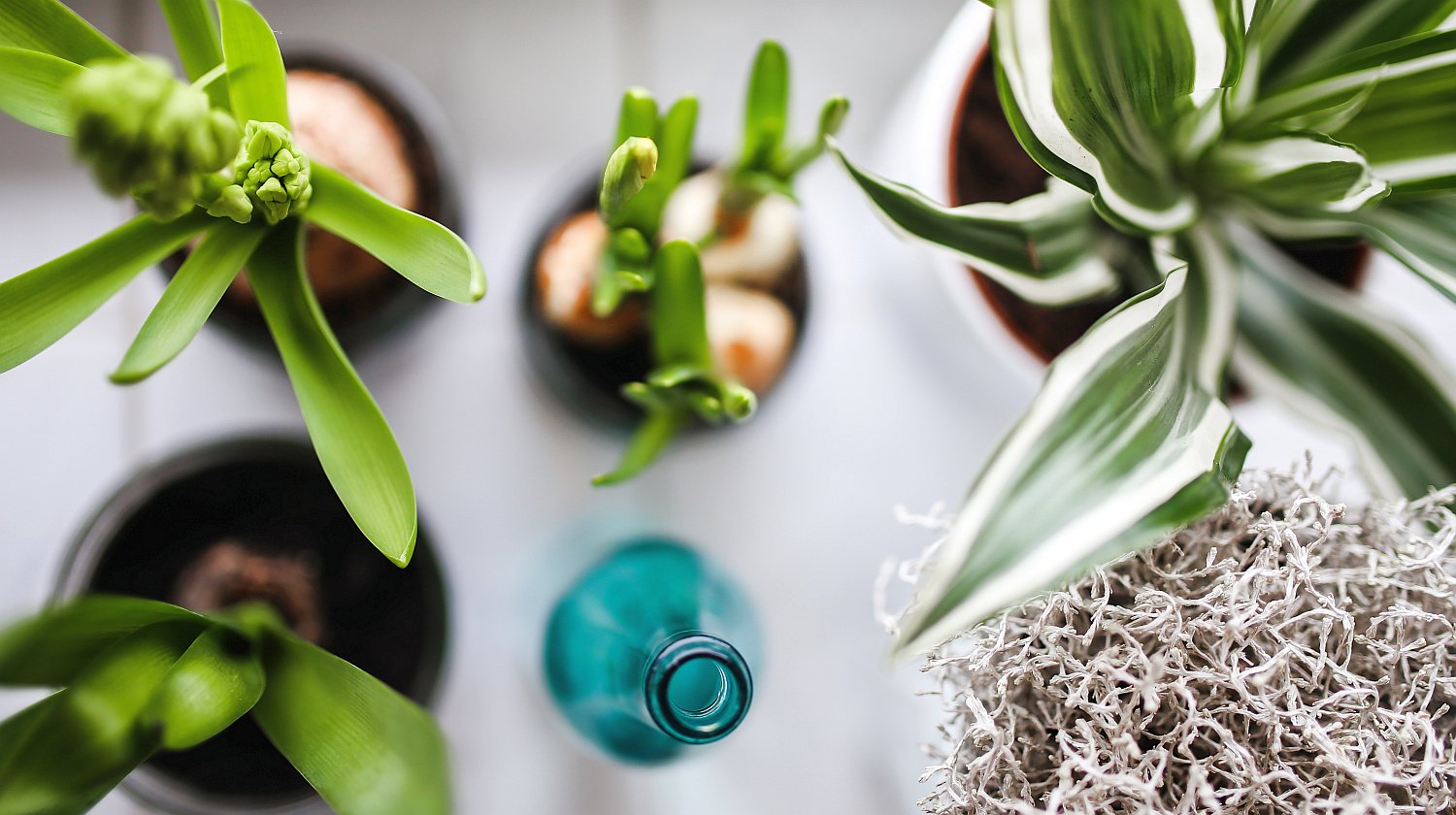If you’re looking for the best air purifier, pay attention to these options for nature fresh air purifier!
RELATED: How Does Water Temperature Affect Your Hair?
In this article:
Air Purifier Options to Help Eliminate Bacteria and Mold
What an Air Purifier Does
Whether you live in your own home, in a rented apartment, or even an RV, indoor air quality is always an issue. In the past, people either turned to expensive, bulky machines to act as an air purifier — or they did without.
These days, new technology and the rediscovery of older nature air purifier traditions combine to make clean air a reality for any household.
1. Houseplants

It doesn’t get much more natural than plants, right? Studies have shown that houseplants have an amazing ability to improve air quality by removing air pollutants and even bad smells.
Among the more useful ones are:
Scented Geraniums (Pelargonium spp.)
These delicate-looking plants aren’t related to outdoor geraniums. They’re not noted for filtering out specific fumes, but they do perform a valuable service nonetheless.
They freshen the air with their naturally-delicious scents, to help counteract pet smells, mustiness or other unpleasant smells.
Depending on the variety, these indoor plants can evoke nutmeg, clove, cinnamon, rose, oranges, lemons, limes, or even chocolate! They also produce small flowers in various colors — again, depending on the type you choose.
Put them in your warmest, sunniest rooms.
Weeping Fig (Ficus benjamina)
This tall standing plant thrives in direct sunlight. It also acts as an air filter for xylene and formaldehyde.
Spider Plant (Chlorophytum comosum)
This narrow-leaved plant can be hung in a shady place or kept on a dresser in an out-of-the-way corner. It’s an ideal home air purifier for clearing carbon monoxide and formaldehyde.
Mother-in-Law’s Tongue (Sansevieria trifasciata)
Well-suited to humid bathrooms, the “snake plant,” as it’s also called, helps filter the fumes from cleaning and beauty products.
English Ivy (Hedera helix)
This trailing ivy loves humid places and only needs about a half day’s worth of sunlight. The plant is prized for its ability to achieve clean air by filtering a variety of impurities.
Aloe (Aloe vera)
People like to keep aloe in the kitchen because the leaves, when split open, soothe cooking burns. As luck would have it, aloe vera also purifies the air of formaldehyde and other fumes found in new countertops, as well as in modern paint and stain products.
Peace Lily (Spathiphyllum ‘Mauna Loa’)
With the exception of scented geraniums, many air purifying houseplants don’t provide actual blooms. But peace lilies are striking, tall flowers.
They’re also practically maintenance-free, preferring less light and water than many flowers. Most importantly, peace lilies clean virtually all common home pollutants from the air.
Note: Before you set out any houseplants, double-check with a site such as the Humane Society for a list of those which may be harmful to pets. If that’s a concern, you can either seek an alternative houseplant or keep it out of the way of your mischievous pet.
RELATED: Home Upgrade for Health? 5 Top Improvements!
2. AC Alternatives
Air conditioning may feel refreshing on the hottest days, but the machines are notorious for causing breathing problems if not maintained perfectly. Their filters and drip pans can be breeding grounds for mold and other air pollutants.
Instead of artificial air coolant systems, turn to some age-old tricks for cooling and purifying your home’s air.
Ceiling fans lower air temperature by several degrees, while also helping to freshen air via circulation. Aside from leaving screened windows open, make sure that there are open windows on different sides of the house or within rooms, for cross-ventilation.
When you’re planning landscaping improvements, keep in mind cooling opportunities from the outside-in.
Large trees and shrubs on the south and west sides of your house are the most effective. (Deciduous trees are best. )
Deciduous Trees Definition: Trees that drop their leaves in the winter, allowing sunlight to provide natural heating when it’s needed.
Finally, switch up any habits that might be unknowingly contributing to the problem. Ovens and even computers can give off heat.
Avoid running heat-giving appliances during the hottest parts of the day.
Window treatments that block sunlight but allow fresh air in are ideal. Look for window blinds and specialized valances.
3. Light Up and Purify Your Home the Natural Way
Artificial light has its place. But you can add brightness to a room while giving yourself the gift of clean air.
Here are two natural room air purifier options that also provide a soft glow:
Himalayan Salt Lamps
These pink salt lamps are reputed to be natural air ionizers. The ability to neutralize home air toxins is obviously a primary reason to invest in one or two salt lamps.
But many people get these unusually shaped lamps for their beauty, along with the natural glow they add to any room.
Beeswax Candles
Not only are beeswax candles classically natural, but they have advantages over the more modern paraffin types.
First, they don’t release the fumes that petroleum-based paraffin candles do. Second, they are natural air ionizers.
That quality allows beeswax candles to help clean the air of toxins as they bring light and charm to any room.
4. Look Into the Newest Generation of Air Filters

Today’s home air purifier options aren’t the bulky machines you might be envisioning. Instead, they are plug-in systems that take up virtually no space.
The Tyent Elite Air Filter, for example, uses natural humidity and a broad-spectrum ultraviolet light to create the best air filter process possible. It can treat airborne bacteria, mold spores, toxic fumes, and other air pollutants.
Another big advantage to products like the Elite Air Filter? They don’t rely on temporary filters that need to be changed.
That means even the most absent-minded householders can enjoy the long-lasting benefits of a room air purifier.
Find out the top 10 indoor houseplants for air purification by facts@WEB:
If you’re concerned about the different types of air pollutants that might exist in your home, consider purchasing a testing kit, or hiring a local service. But it’s also important to understand that it’s easy to establish a number of natural air purifier systems throughout your home, ranging from plants to plug-in natural air purifier filters.
Together, they tackle a broad spectrum of potential air quality issues.
What do you need in an air purifier? Share your thoughts in the comments section below.
Up Next:

![7 Best RO Water Purifiers & Alternatives [2024] water fountain](https://www.tyentusa.com/blog/wp-content/uploads/2024/09/Screenshot-2024-09-08-021604-150x150.png)
![AlkaViva Review and Alternatives [2024] AlkaViva Review and Alternatives [2024]](https://www.tyentusa.com/blog/wp-content/uploads/2024/08/Screenshot-2024-08-15-000646-300x141.png)
![7 Best Hydrogen Water Pitchers & Alternatives [2024] water pitcher](https://www.tyentusa.com/blog/wp-content/uploads/2024/10/Screenshot-2024-10-16-223628-150x150.png)





